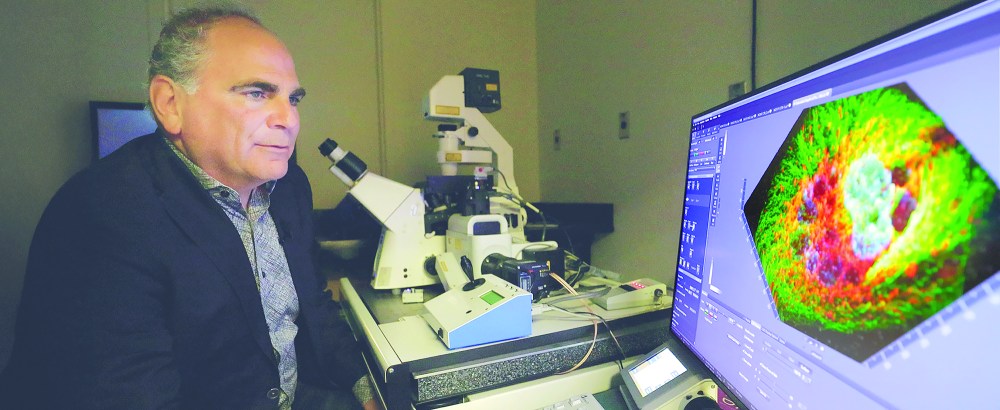Sponsored Content
From Manitoba to NASA: How disrupted sleep patterns could hold the key to heart disease
UM RESEARCH: Delivering Solutions
Advertisement
Read this article for free:
or
Already have an account? Log in here »
To continue reading, please subscribe:
Monthly Digital Subscription
$0 for the first 4 weeks*
- Enjoy unlimited reading on winnipegfreepress.com
- Read the E-Edition, our digital replica newspaper
- Access News Break, our award-winning app
- Play interactive puzzles
*No charge for 4 weeks then price increases to the regular rate of $19.00 plus GST every four weeks. Offer available to new and qualified returning subscribers only. Cancel any time.
Monthly Digital Subscription
$4.75/week*
- Enjoy unlimited reading on winnipegfreepress.com
- Read the E-Edition, our digital replica newspaper
- Access News Break, our award-winning app
- Play interactive puzzles
*Billed as $19 plus GST every four weeks. Cancel any time.
To continue reading, please subscribe:
Add Free Press access to your Brandon Sun subscription for only an additional
$1 for the first 4 weeks*
*Your next subscription payment will increase by $1.00 and you will be charged $16.99 plus GST for four weeks. After four weeks, your payment will increase to $23.99 plus GST every four weeks.
Read unlimited articles for free today:
or
Already have an account? Log in here »
Hey there, time traveller!
This article was published 14/06/2025 (185 days ago), so information in it may no longer be current.
The Problem
Heart disease is the second leading cause of death in Canada. In particular, people who work shifts may face a greater risk than most, according to Dr. Lorrie Kirshenbaum, a professor at University of Manitoba (UM) and Director of the Institute of Cardiovascular Sciences at the St. Boniface Hospital Albrechtsen Research Centre.
“When the body’s biological clock or circadian rhythm is disrupted, such as with shift work, it affects the heart’s ability to function and increases the risk of heart disease,” says Kirshenbaum.

People working outside the traditional 9-to-5 – such as nurses, doctors, and overnight caregivers – often experience disruptions to their circadian rhythm. The internal clock helps regulate sleep, hormones, and heart function. When it’s out of sync due to irregular shifts, it can place added stress on the cardiovascular system and raise the risk of heart disease in both men and women.
Women with heart disease often experience different signs and symptoms than men. Contrary to common belief, women are just as likely as men to experience a stroke or heart attack. This is because women have been historically underrepresented in heart research and often receive misdiagnosis and delayed treatment.
The Solution
Recognizing the need for additional heart research in women, Kirshenbaum spearheaded a dedicated research program focused on women’s heart health.
“When the body’s biological clock or circadian rhythm is disrupted, such as with shift work, it affects the heart’s ability to function and increases the risk of heart disease.”
This program, based at St. Boniface Hospital Research Centre and in partnership with UM, focuses on risk factors that affect women such as shift work, chemotherapy effects on the heart, abnormalities in lipids, heart muscle repair, maternal health, life-style and cardiac rehabilitation.
“Like shift workers, astronauts on the international space station also experience disruptions to the body’s clock, due to the frequent sun rises and sun set every 90 minutes while orbiting the earth,” says Kirshenbaum. “That kind of stress can increase their risk of heart disease.”
To address these risks, Kirshenbaum became interested in exploring how disrupted circadian rhythms affect heart health during space flight.
This opened another avenue of research with collaborator Dr. Inna Rabinovich-Nikitin, a UM assistant professor, and the space agency NASA to study what happens to the cells of heart during microgravity in space flight. The research will shed light on how microgravity and irregular sleep-wake cycles can affect heart function in space and in individuals living with heart disease on Earth.
The Impact
This research is placing Manitoba at the forefront of how heart disease is understood and treated – especially for people at risk.
By developing new screening tools, prevention programs and tailored treatments, the UM researchers hope to improve health outcomes and raise awareness of the hidden risks.
Most importantly, both women and men will gain greater awareness of the dangers of heart disease and will have better access to cutting-edge treatment to save and prolong their lives.
“Our research will drive collaborations across Canada and around the world,” says Kirshenbaum. “We hope to use the breakthroughs to create life-saving advances right here at home.”
For nearly 150 years, the University of Manitoba has transformed lives through groundbreaking research and homegrown innovation. We push the boundaries of knowledge and do the hard work here in Manitoba to move our community and the world forward. Our researchers tackle society’s most pressing challenges, from healthcare and sustainability to Arctic accessibility and security, delivering solutions that make a real impact. With a spirit of determination and discovery, we are shaping a better future for our province and beyond.

This article is produced by the Advertising Department of the Winnipeg Free Press, in collaboration with University of Manitoba

